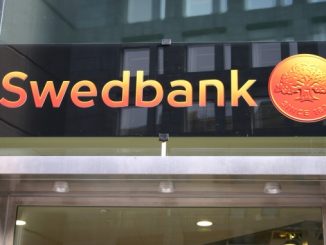
A building’s energy efficiency has a negative and highly significant correlation with the risk of mortgage default, according to an Energy Efficient Mortgage Initiative (EEMI) study, which it says is the fullest analysis of the subject and a timely finding as the European Commission sets out its post-Covid-19 agenda.
Conducted as part of the Horizon 2020 Energy Efficient Data Protocol & Portal (EeDaPP) project, the study was aimed at supporting the Energy Efficient Mortgage Initiative’s contention that energy efficient mortgages reduce owners’ payment disruption risk, increase property value, and, as a result, reduce credit risk for financial institutions – something many policymakers have said must be proven in order to be reflected in regulations.
With the support of other EeDaPP consortium members and EEMI pilot banks, Ca’ Foscari University of Venice and credit bureau services company CRIF detailed and analysed 72,980 Italian residential mortgages granted over the past decade, a period when house prices declined, with energy performance certificates (EPCs) a key metric.
According to their findings, released on Monday of last week (31 August), less efficient mortgages are predominantly affected by default. Additionally, they found that the degree of energy efficiency also matters.
“After two years of data collection and market analysis, the EeDaPP project is fundamentally shifting the energy efficiency financing debate towards an accurate analysis of correlation between credit risk and building energy performance, offering a solid quantitative basis for future policy reflections,” said Monica Billio, professor of econometrics at Ca’ Foscari.
According to Luca Bertalot, EeDaPP coordinator and secretary general of the European Mortgage Federation-European Covered Bond Council (EMF-ECBC), the study’s dataset used was both broader and larger than previous studies into the impact of energy efficiency on property values and default rates – which almost all found a similar correlation – and furthermore, more operationally valid, given the efforts the EEMI has made to source relevant information from its pilot banks.
“It is also linked to a definition, namely that we came up with under the Energy Efficient Mortgages Action Plan (EeMAP), that is captured in the EU taxonomy,” added Bertalot (pictured).
“With a view to scaling up the business case for energy efficient mortgages,” he said, “we believe these results are of great significance in relation to the current policy agenda, given their relevance for key files, including the EU Green Deal, the Renewed EU Action Plan on Sustainable Finance, and the implementation of Basel III into EU legislation.”
The results of the study were on Friday presented to the Commission, which is currently finalising its post-Covid-19 agenda.
“Given the social landscape that we have after Covid, it is even more important to improve the disposable income of families living in sub-optimal buildings,” Bertalot told Sustainabonds.
Particularly noteworthy among the study’s findings was that moving from a G to F EPC label was as important as moving from B to A, he said.
“This means it’s worthwhile focusing efforts not only on the best categories, but also in those that are G and F, which is the majority of houses in Europe,” said Bertalot. “So the mechanism we want to put in place should be able to incentivise the consumer to move a house from G to F – this incremental improvement in the energy efficiency value is crucial.
“If you look around Europe, from Lithuania to Portugal, or from Ireland to Greece, renovation loans are becoming a very important component of national markets,” he added, “which is positive.”
The EEMI is aiming to highlight the benefits that can be achieved when banks, utilities and others combine to improve the energy efficiency of older buildings in a new Horizon 2020 project application targeting the renovation of three historic buildings: Paphos Gate in Nicosia, the Florence Charterhouse (pictured), and the Ca’ Foscari building in Venice.
“With these three landmark pilots, we want to demonstrate to Europe’s governments that if we make an effort to work together across the value chain we can really tackle public buildings – schools, museums, barracks and the like – and this can be a major driver for the green way,” said Bertalot. “And it’s not just about energy efficiency; it’s also about the surrounding cultural heritage.”
EEMI participants are meanwhile preparing the Energy Efficiency Label, whose launch is almost ready, following delays resulting from the pandemic.
“The EMF-ECBC is fully committed to this and we have a group of pioneers, 60 banks, who are willing to make new products,” said Bertalot.



